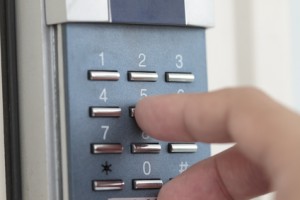 The popularity of access control has significantly increased in recent times with a large section of Americans demanding access controls as an extension of their and alarms, and an increasing number of security services providers continue to offer it just that way. IMS Research, now part of IHS Inc., in a report forecasted that the access control industry is set to go over the $2.3 billion mark globally by the end of 2013. That’s a steep increase as compared to $2.1 billion in 2011.
The popularity of access control has significantly increased in recent times with a large section of Americans demanding access controls as an extension of their and alarms, and an increasing number of security services providers continue to offer it just that way. IMS Research, now part of IHS Inc., in a report forecasted that the access control industry is set to go over the $2.3 billion mark globally by the end of 2013. That’s a steep increase as compared to $2.1 billion in 2011.
The only hurdle along the way, however, seems to bea lack of open standards. Different surveys conducted by several toward the end of 2012 pointed to one fact, that convenience and ease of operability of the will be one of the powerful driving forces behind customers choosing their security companies. The lack of open standards in access controls means that consumers cannot very conveniently switch between suppliers or sync different systems together, at least not easily. In spite of strong efforts by associations like Physical Security Interoperability Alliance (PSIA) along with the International Electrotechnical Commission (IEC) to fully enforce open standards in access control, no positive steps have been taken in the direction yet and hence, the “implementation remains stagnant.”
IEC 60839-11-1, which could be voted on later this year, could have a big impact on the manufacturing and interoperability of thousands of access control systems,” said Blake Kozak, senior analyst for access control, fire, and security at IHS. “The proposed standard specifies not only the minimum functionality, performance requirements, and test methods for electronic access control systems, but also the components used for physical access in and around buildings.”
As of now, every access control panel comes with its own set of software and engine that works with specifically designed software. End users, therefore, cannot use panels purchased from different manufacturers together in the same installation. This is a cause of concern for most buyers, as most people would like to be able to sync different services together such as access control with HVAC or access control with video surveillance.
Open standards would certainly reduce the stronghold of “vendor lock,” the phenomenon that restrains consumers from switching between suppliers at will. That, however, isn’t the only motivation behind the implementation of open standards. The idea is to be able to allow consumers to achieve ease of integration with different systems from different manufacturers, as per every individual’s needs.
To sum up, open standards for access control is what the industry needs to change in access controls the way we know them today. If the introduction of open standards isn’t implemented soon enough, the access control industry will continue to lag behind the video surveillance industry.

Gary Nash
Author – Gary has been with us for 3 years, but already has expert knowledge of the home security industry. He’s in charge of company research and news. Zach works to ensure that the site provides the most accurate and timely news in the industry.

